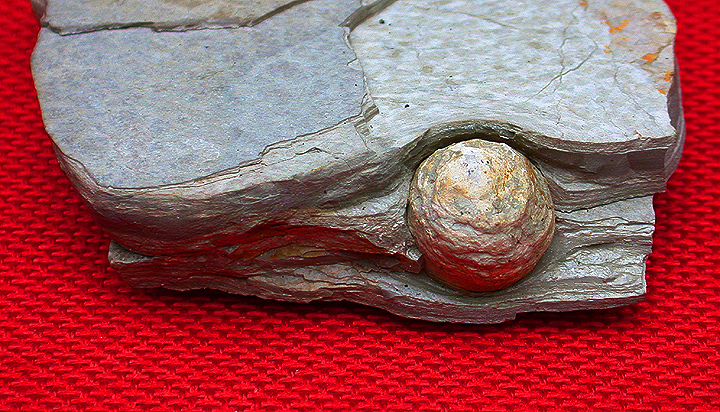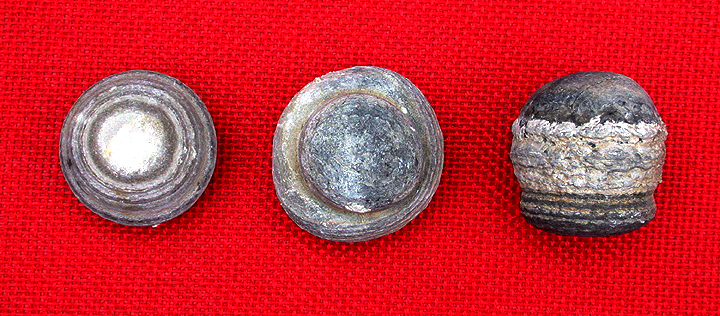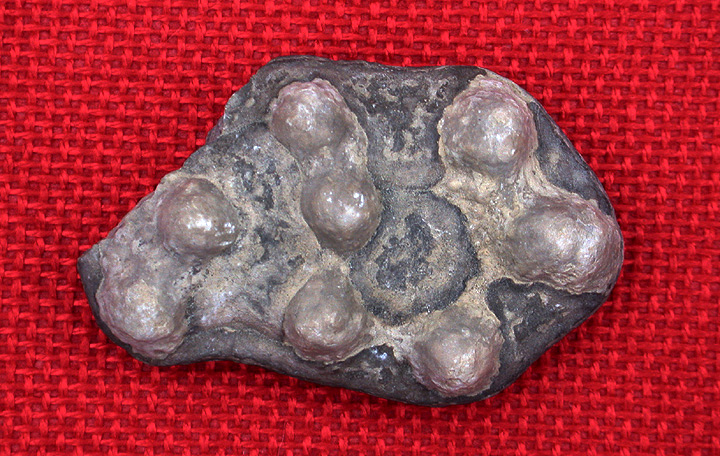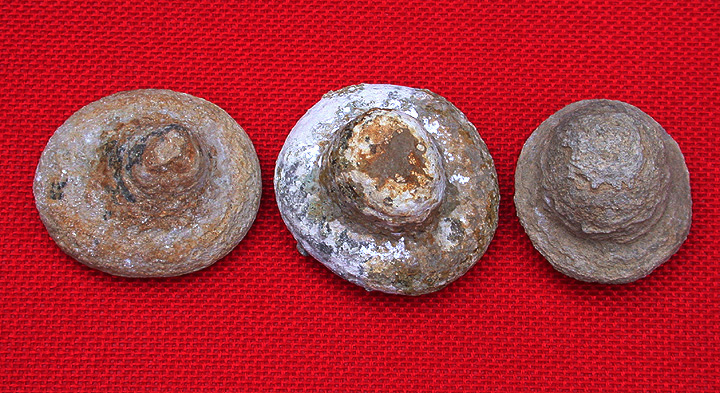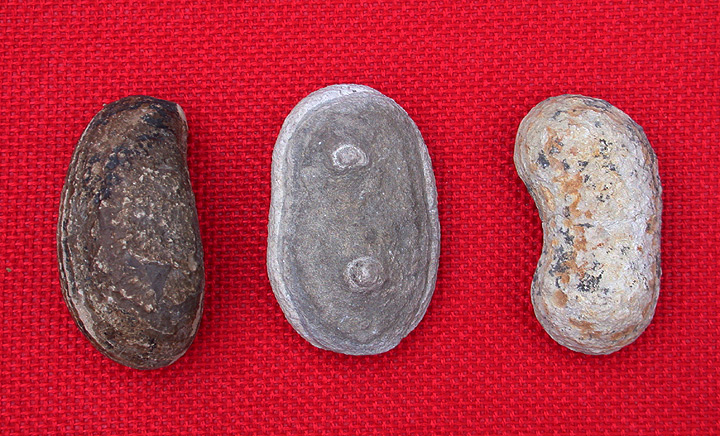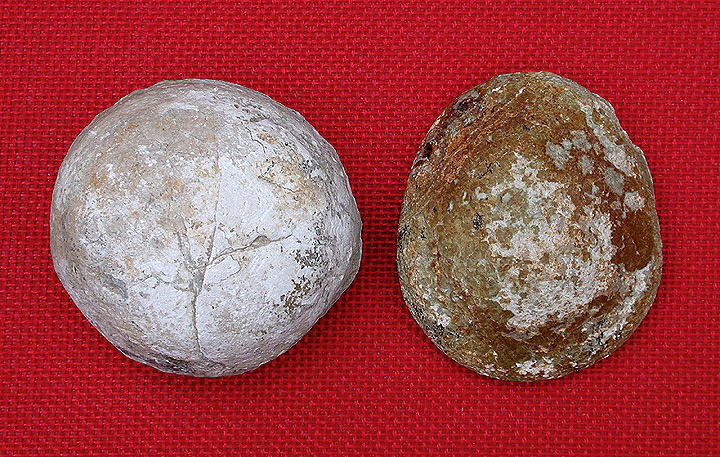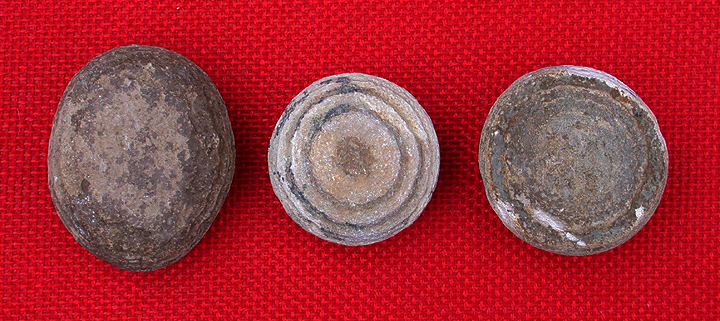| Here are several freshly dug world-famous calcareous concretions from microlaminated green shales exposed in Fossil Insect Canyon, Mojave Desert, California. The calcium carbonate (limestone) concretions yield up a genuine bonanza of fantastically preserved three-dimensional insects, spiders, water mites, fairy shrimp, copepods (a tiny crustacean, of which Cyclops is the best-known freshwater type), ostracods (a minute bivalve crustacean), cladocerans (a small crustacean often called a "water flea"), and diatoms (microscopic single-celled algae). In order to secure the fossils, the concretions must be dissolved in a dilute solution of acid; many collectors prefer to use a gentle organic variety, such as formic acid, or even acetic (glacial acetic--not the kind found in vinegar)--although excellent results can also be obtained with muriatic acid, commercially available, highly potent hydrochloric acid. The mineralized fossil specimens, impervious to such acids, preserved as they are by chalcedony quartz (silicon dioxide) and celestite (strontium sulfate), primarily, can then be recovered from the insoluble residues remaining from the chemical reaction. |
